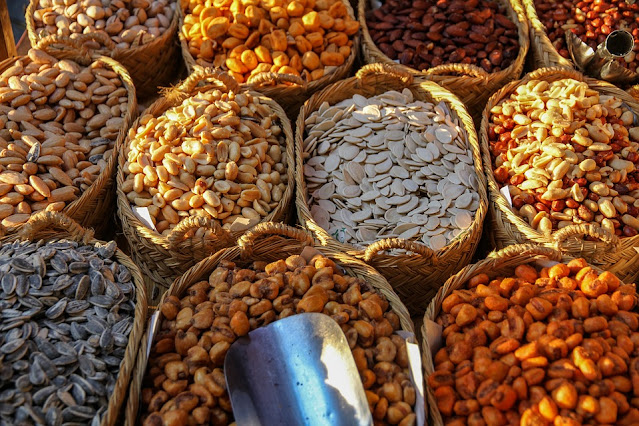How to Make Gluten-Free Rotis in a Healthy and Tasty Way.
Rotis are the daily bread of Indian homes, made usually with wheat. But for those who are gluten-intolerant, have celiac disease, or simply want to cut back on gluten, traditional rotis aren’t always an option. The good news? You can still enjoy warm, soft, and delicious rotis without gluten — and without compromising on health or taste.
Here’s how you can make gluten-free
rotis that are both healthy and satisfying, tailored to the Indian palate.
 |
| Image Courtesy- Pexels |
Choose Your Flour Wisely
The first step to making gluten-free
rotis is choosing the right flour. Thankfully, Indian kitchens already use many
naturally gluten-free flours that are nutrient-rich:
- Jowar (Sorghum):
High in fiber and protein, keeps you full longer.
- Bajra (Pearl Millet):
Great for winters, boosts energy and aids digestion.
- Ragi (Finger Millet):
Rich in calcium and iron, excellent for kids and elders.
- Rice Flour:
Easy to digest, works well in combination with other flours.
- Besan (Chickpea Flour):
Protein-packed, perfect for savory rotis.
- Amaranth (Rajgira): A
superfood, packed with antioxidants and protein.
Each of these flours brings a
different flavor and texture to your rotis. Experiment with single or mixed
flours depending on your taste and nutritional needs.
Master the Art of Kneading
Unlike wheat flour, gluten-free flours
don’t bind easily. That’s why the kneading process is different:
- Use hot water to knead the dough.
This helps activate the natural starches and improves pliability.
- Add a teaspoon of ghee or olive oil
while kneading to make the dough softer.
- Don’t over-knead.
- Pro Tip: Let the dough rest for 10-15
minutes under a damp cloth to make it easier to roll out.
Rolling & Cooking
Gluten-free dough tends to crack, so
handle it gently:
- Use two sheets of parchment paper
or a banana leaf to roll the dough without sticking.
- Roll out small rotis – about the size of
your palm – for easier flipping and even cooking.
- Use a non-stick or cast iron tava
and cook on medium heat. Flip gently but firmly.
Optional: Once off the tava, finish it with a quick puff on the flame (phulka-style) if the dough holds well.
Boost Flavor & Nutrition
Give your gluten-free rotis a tasty,
healthy twist:
- Mix grated vegetables like carrot,
beetroot, or spinach into the dough.
- Add herbs and spices like ajwain,
cumin, crushed garlic, or kasuri methi for extra flavor and digestion aid.
· Add a nutritious crunch with fiber-packed, omega-rich seeds like flax, sesame, or chia.
What to Pair With
Gluten-free rotis pair beautifully
with:
- Dal tadka or dal fry
- Palak paneer or baingan bharta
- Yogurt with a pinch of roasted jeera
- Chutneys made with coconut, mint, or
tomato
Switching to gluten-free rotis doesn't
mean missing out. With the right flour, a little patience, and Indian culinary
creativity, you can enjoy soft, tasty, and wholesome rotis every day. Whether
you are gluten-sensitive or just health-conscious, these rotis are a great way
to keep your Indian meals balanced and gut-friendly.





Travel insurance is an essential form of risk management for any trip, whether you're traveling across the country or around the globe.
ReplyDeleteOrigency is a top influencer marketing agency in Pakistan, delivering strategic influencer campaigns that build brand credibility, expand reach, and drive measurable growth.
ReplyDeleteFind the best coworking spaces in Karachi with modern amenities, inspiring work environments, and networking opportunities for freelancers, startups, and growing teams.
ReplyDeleteOrder medicine online in Edinburgh with ease. Choose from a wide range of trusted prescription and over-the-counter medicines, and have them delivered quickly and safely to your home.
ReplyDeleteTulsi plants are sacred herbs known for their healing properties. Perfect for home gardens, they support wellness, improve immunity, and promote a calm, healthy environment.
ReplyDelete